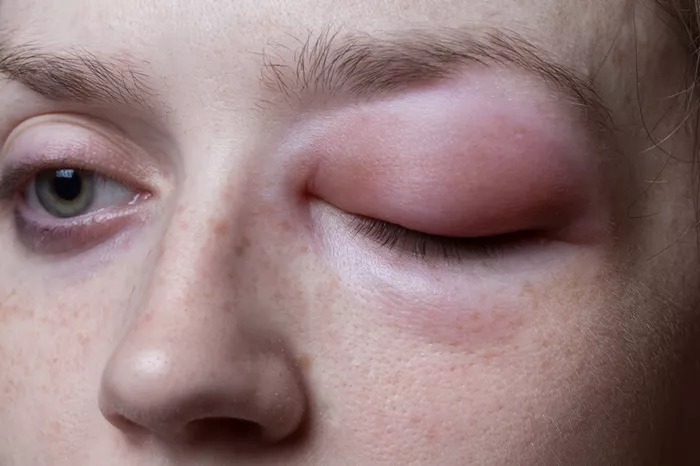Anxiety disorders are among the most prevalent mental health conditions worldwide, affecting millions of people. They are characterized by excessive fear or anxiety and can significantly impair an individual’s daily functioning and quality of life. This article explores the six most common anxiety disorders, providing insights into their symptoms, causes, and treatment options.
1. Generalized Anxiety Disorder (GAD)
Symptoms
Generalized Anxiety Disorder (GAD) is characterized by persistent and excessive worry about various aspects of daily life, such as work, health, finances, and relationships. People with GAD find it difficult to control their worry and often experience the following symptoms:
Restlessness or feeling on edge
Fatigue
Difficulty concentrating
Irritability
Muscle tension
Sleep disturbances
Causes
The exact cause of GAD is not fully understood, but it likely involves a combination of genetic, environmental, and psychological factors. Family history, stressful life events, and certain personality traits can increase the risk of developing GAD.
Treatment
Treatment for GAD typically involves a combination of psychotherapy, medication, and lifestyle changes. Cognitive Behavioral Therapy (CBT) is highly effective, helping individuals identify and challenge irrational thoughts. Medications such as selective serotonin reuptake inhibitors (SSRIs) and benzodiazepines may also be prescribed to manage symptoms. Additionally, regular exercise, mindfulness, and stress management techniques can support overall well-being.
2. Panic Disorder
Symptoms
Panic Disorder is characterized by recurrent and unexpected panic attacks—intense periods of fear or discomfort that peak within minutes. Symptoms of a panic attack can include:
Palpitations or accelerated heart rate
Sweating
Trembling or shaking
Shortness of breath or a feeling of being smothered
Chest pain or discomfort
Nausea or abdominal distress
Dizziness or lightheadedness
Fear of losing control or “going crazy”
Fear of dying
Causes
Panic Disorder can be triggered by a combination of genetic predisposition, brain chemistry, and stressful life events. A history of trauma or significant life changes may also contribute to the development of this disorder.
Treatment
Treatment for Panic Disorder often includes psychotherapy, medication, and lifestyle modifications. CBT is particularly effective, helping individuals understand and manage their panic attacks. Medications such as SSRIs, serotonin-norepinephrine reuptake inhibitors (SNRIs), and benzodiazepines can reduce the frequency and severity of panic attacks. Relaxation techniques, regular physical activity, and avoiding caffeine and alcohol can also help manage symptoms.
3. Social Anxiety Disorder (Social Phobia)
Symptoms
Social Anxiety Disorder, also known as social phobia, involves an intense fear of social or performance situations in which the individual may be scrutinized or judged by others. Common symptoms include:
Fear of speaking in public
Fear of interacting with strangers
Fear of eating or drinking in front of others
Avoidance of social situations
Intense anxiety or panic attacks in social settings
Physical symptoms such as blushing, sweating, trembling, or nausea
Causes
The development of Social Anxiety Disorder is influenced by genetic, environmental, and psychological factors. A family history of anxiety disorders, negative social experiences, and personality traits such as shyness or introversion can increase the risk.
Treatment
Effective treatment for Social Anxiety Disorder includes psychotherapy, medication, and self-help strategies. CBT helps individuals learn how to manage social anxiety by challenging negative thought patterns and gradually exposing themselves to feared situations. Medications such as SSRIs and beta-blockers can help reduce anxiety symptoms. Social skills training, relaxation techniques, and gradual exposure to social situations can also be beneficial.
4. Specific Phobias
Symptoms
Specific phobias involve an intense and irrational fear of a specific object, situation, or activity that is typically avoided or endured with significant distress. Common types of specific phobias include fear of heights (acrophobia), fear of flying (aviophobia), and fear of animals (zoophobia). Symptoms include:
Immediate anxiety response upon exposure to the phobic stimulus
Avoidance of the phobic object or situation
Intense fear or panic attacks when confronted with the phobic stimulus
Physical symptoms such as sweating, trembling, rapid heartbeat, and shortness of breath
Causes
Specific phobias can develop from a combination of genetic, environmental, and psychological factors. Traumatic experiences, learned behaviors, and a family history of anxiety disorders can contribute to the development of specific phobias.
Treatment
Treatment for specific phobias often involves exposure therapy, a type of CBT that gradually exposes individuals to their feared object or situation in a controlled manner. This helps desensitize them to the phobic stimulus and reduce their anxiety response. Medications are generally not the primary treatment for specific phobias but may be used in conjunction with therapy for severe cases.
5. Obsessive-Compulsive Disorder (OCD)
Symptoms
Obsessive-Compulsive Disorder (OCD) is characterized by persistent, unwanted thoughts (obsessions) and repetitive behaviors or mental acts (compulsions) that the individual feels driven to perform.
Common obsessions include fears of contamination, harming others, or doubts about safety. Compulsions may involve washing, checking, counting, or arranging objects. Symptoms include:
Obsessions: Intrusive, distressing thoughts or images
Compulsions: Repetitive behaviors or mental acts performed to reduce anxiety
Significant distress or impairment in daily functioning
Causes
The exact cause of OCD is not fully understood, but it is believed to involve genetic, neurobiological, and environmental factors. Abnormalities in brain function and neurotransmitter systems, family history, and stressful life events can contribute to the development of OCD.
Treatment
Treatment for OCD typically involves a combination of psychotherapy and medication. Exposure and Response Prevention (ERP), a type of CBT, is highly effective in helping individuals face their fears and reduce compulsive behaviors. Medications such as SSRIs and tricyclic antidepressants can also help manage symptoms. Support groups and self-help strategies can provide additional support.
6. Post-Traumatic Stress Disorder (PTSD)
Symptoms
Post-Traumatic Stress Disorder (PTSD) can develop after experiencing or witnessing a traumatic event, such as combat, natural disasters, accidents, or assault. Symptoms of PTSD include:
Re-experiencing the trauma through flashbacks, nightmares, or intrusive thoughts
Avoidance of reminders of the trauma
Negative changes in thoughts and mood, such as feelings of guilt, detachment, or negative beliefs about oneself or others
Hyperarousal symptoms, such as irritability, difficulty sleeping, hypervigilance, and exaggerated startle response
Causes
PTSD is caused by exposure to a traumatic event and is influenced by individual vulnerability, the nature of the trauma, and the presence of social support. Genetic factors and preexisting mental health conditions can also play a role in the development of PTSD.
Treatment
Treatment for PTSD often includes psychotherapy, medication, and support from loved ones. Trauma-focused CBT and Eye Movement Desensitization and Reprocessing (EMDR) are effective therapies for processing and reducing trauma-related symptoms. Medications such as SSRIs, SNRIs, and prazosin (for nightmares) can help manage symptoms. Support groups and peer support can provide additional emotional support and understanding.
Conclusion
Understanding the six common anxiety disorders—Generalized Anxiety Disorder, Panic Disorder, Social Anxiety Disorder, Specific Phobias, Obsessive-Compulsive Disorder, and Post-Traumatic Stress Disorder—is essential for recognizing and addressing these conditions. Each disorder has unique symptoms and contributing factors, but they all share the potential to significantly impact an individual’s life.
Effective treatment strategies typically involve a combination of psychotherapy, medication, and lifestyle changes tailored to the individual’s needs. Cognitive Behavioral Therapy, in particular, has proven to be highly effective for many anxiety disorders. Medications can help manage symptoms, and lifestyle modifications, such as regular exercise, mindfulness practices, and stress management techniques, can support overall mental health.
For those experiencing symptoms of an anxiety disorder, seeking professional help is crucial. Early intervention and appropriate treatment can greatly improve outcomes and help individuals lead fulfilling lives despite their anxiety.
[inline_related_posts title=”You Might Be Interested In” title_align=”left” style=”list” number=”6″ align=”none” ids=”9139,9136,9132″ by=”categories” orderby=”rand” order=”DESC” hide_thumb=”no” thumb_right=”no” views=”no” date=”yes” grid_columns=”2″ post_type=”” tax=””]
































